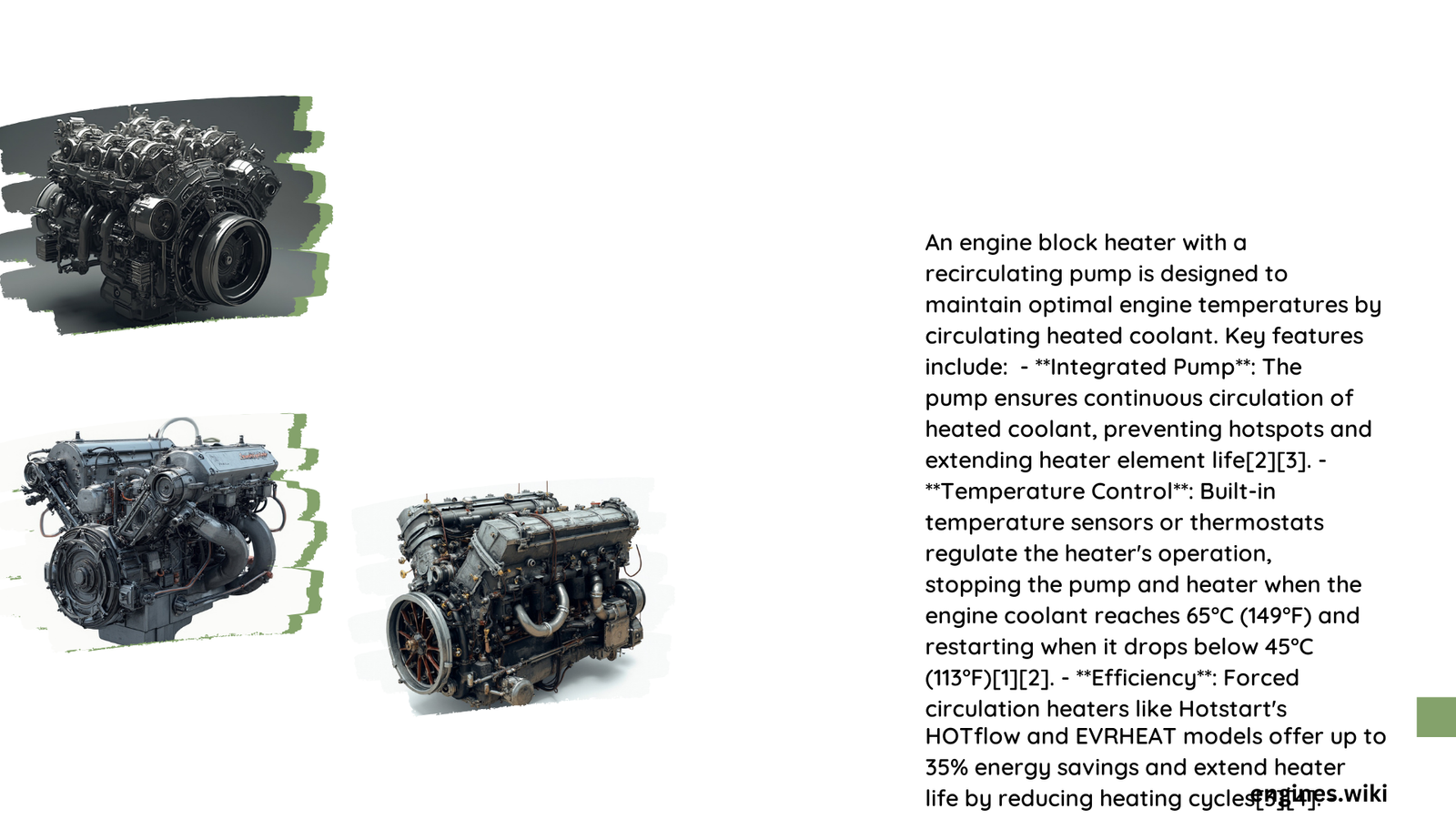Engine block heaters with recirculating pumps represent a sophisticated thermal management solution for vehicles operating in cold environments. These advanced systems efficiently warm engine components, reduce mechanical stress during cold starts, and optimize overall engine performance by maintaining consistent coolant temperature and circulation, ultimately extending the lifespan of critical engine components and improving fuel efficiency.
What Makes Engine Block Heater with Recirculating Pump Essential?
Why Do Vehicles Need Block Heaters?
Cold temperatures significantly impact engine performance and longevity. When ambient temperatures drop, engine oil becomes viscous, mechanical components experience increased friction, and starting efficiency decreases. An engine block heater with a recirculating pump addresses these challenges by:
- Maintaining optimal coolant temperature
- Reducing mechanical wear during cold starts
- Improving fuel combustion efficiency
- Enhancing overall engine reliability
How Does Recirculating Pump Technology Work?
The recirculating pump mechanism operates through a sophisticated thermal transfer process:
- Heating Element Activation
- Electrical resistance heater warms coolant
-
Generates consistent thermal energy
-
Coolant Circulation
- Pump continuously moves heated coolant
- Ensures uniform temperature distribution
-
Prevents localized temperature variations
-
Thermal Equilibrium
- Maintains engine block at optimal temperature
- Reduces cold-start stress on mechanical components
Installation Considerations for Block Heater

What Tools Are Required?
| Tool Category | Specific Requirements |
|---|---|
| Wrenches | Adjustable, Socket Set |
| Plumbing | High-Temperature Hoses |
| Electrical | Multimeter, Wire Strippers |
| Miscellaneous | Heat-Resistant Tape, Sealants |
Where Should Heater Be Mounted?
Critical mounting guidelines include:
- Horizontal position with outlet neck upward
- Below lowest water jacket level
- Secure mounting using provided straps
- Ensure minimal vibration interference
What Electrical Specifications Matter?
Key electrical considerations:
– Voltage compatibility
– Wattage requirements
– Amperage specifications
– Plug type and certification
Performance Metrics and Benefits
How Much Temperature Rise Can Be Expected?
Performance data indicates:
– Average temperature rise: 30-50°F within 1-2 hours
– Ambient temperature dependent
– Heater wattage influences warming speed
What Cost Savings Are Possible?
Potential economic advantages:
– Reduced fuel consumption during cold starts
– Minimized engine wear
– Extended engine component lifespan
– Lower maintenance expenses
Maintenance and Troubleshooting
What Common Issues Might Occur?
Potential challenges include:
– Coolant leakage
– Electrical connection problems
– Pump motor degradation
– Sediment accumulation
How Often Should System Be Serviced?
Recommended maintenance schedule:
– Annual comprehensive inspection
– Coolant level check every 6 months
– Electrical connection verification
– Pump performance evaluation
Advanced Compatibility Factors
Which Vehicles Benefit Most?
Ideal applications:
– Diesel engines
– Commercial vehicles
– Agricultural equipment
– Construction machinery
– Long-haul transportation
Technical Specifications Comparison
| Feature | Standard Heater | Recirculating Pump Heater |
|---|---|---|
| Warming Speed | Slow | Rapid |
| Temperature Distribution | Uneven | Uniform |
| Energy Efficiency | Moderate | High |
| Mechanical Stress Reduction | Limited | Significant |
Conclusion
Engine block heaters with recirculating pumps represent a critical technological solution for maintaining optimal engine performance in challenging environmental conditions. By understanding installation, maintenance, and operational principles, vehicle owners can significantly enhance their equipment’s reliability and longevity.
